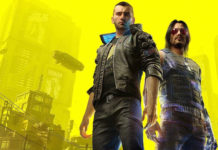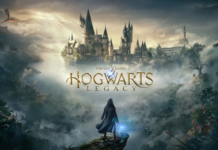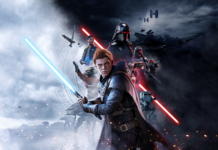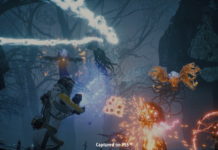Lego Star Wars III certainly isn't a giant leap forward. Instead, it's a cautious step in generally the right direction, adding some welcome new features to TT Games' multi-franchise while failing to address more persistent problems. Those expecting the Lego Star Wars games to conclude once all the movies had been covered (twice) clearly aren't cynical enough: The surprisingly good Clone Wars animated TV series forms the foundation for this entry. You might expect the game to suffer without iconic scenes or a coherent narrative, but the humor and charm ultimately win out.

The bold and colorful designs that make up the show's distinctive style are an ideal fit for TT Games' Lego interpretation. While all the Lego games have been wonderfully inventive in adapting their real life counterparts, Lego Star Wars III benefits from The Clone Wars' existing stylization. The enhanced graphics engine features an improved lighting system and more complex animations, particularly for the Jedi. The Clone Wars television show offers a hyper-realistic portrayal of the lightsiders, who are able to accomplish feats their movie counterparts could only dream of. These are replicated in Lego form, including several Force Unleashed-style kill animations, which make the proceedings a little more lively. For example, your Jedi can shimmy up the legs of an enormous droid, slashing at its knee joints before moving on to another opponent.
While the improved animations give the impression of a more exciting combat system, they haven't changed at all. Lightsaber combat is still a matter of mashing the attack button and occasionally combining an attack with a jump for an area-effect attack. It's a shame TT Games hasn't felt the need for an update–even something as simple as a light attack/heavy attack system would add some much needed depth.

The game certainly isn't without new mechanics. As Jedi became Generals during the Clone Wars, here you'll assume a similar role. During certain missions and the new Galactic Conquest mode, players take charge of a battlefield. A certain number of areas need capturing, and once in possession, players can construct buildings such as barracks, landing pads and shield generators using the studs they've collected. These buildings summon troops and vehicles to help with the battle. You can leave them to their own devices, drive the vehicles or even directly order the troops around with a radio trooper. These segments break up the platforming nicely, though they require little to no strategy and act only as a diversion. All the same, they're a welcome new feature.
Variety is one of Lego Star Wars III's strengths. Between platforming, puzzle-solving and combat, the game rarely falls into a rut. The most visually impressive missions, however, involve flight. In your gunship or fighter, players have fly around one of the impressive capital ships, possibly landing in an assigned area to perform a given task–be it activating torpedoes or helping to douse a fire. One of these missions takes place planetside among the clouds and is a rather memorable moment in the game. Unfortunately, TT Games still hasn't managed to perfect their vehicle control scheme, which rarely does what you want it to. With so many games suffering from the same complaint, it's a little tiring.

Of the many joys to be found in Lego games, collecting studs to buy all the characters and extras is one of the most appealing. The Clone Wars continues this tradition with a huge selection of characters as well as a wonderfully interactive central hub. This hub (previously Dexter's Diner and the Mos Eisley Cantina) is now two capital ships locked in combat. At any time, you can jump into a starship and take a trip into space to explore either ship. Both vessels offer plenty to discover and several challenges to participate in. TT Games have outdone themselves in this regard.
Unfortunately, as outright fun as Lego Star Wars III is, it's riddled with little bugs and frustrations. The PC version contains several glitches that can force players to restart a level or even cause outright crashes. These occurrences are far too common in Lego games. Additionally, in many levels you'll find yourself unsure of what to do next. A convenient message will often pop up from Yoda, but as a general rule, the useless hints will stay on screen (“You need an R2 unit to access this console!”) while more helpful tips go unnoticed. Though the game shouldn't hold your hand the entire time, often you'll be left scratching your head in bewilderment.

Lego Star Wars III should easily be the best the series has to offer. With superior graphics and a decent variety of game styles, it easily overcomes any shortcomings in narrative. Unfortunately, the same problems that have plagued previous Lego games are still on display: difficult to control vehicles, overly simplified combat, unresponsive controls, glitches, drawn out levels, and poor guidance. These problems should have been sorted years ago, and while they don't necessarily ruin the experience here, they do leave a bitter aftertaste. Lego Star Wars III could have been exceptional. Instead, gamers are left with a mildly good offering with too many basic flaws.
[Reviewed on Xbox 360]









